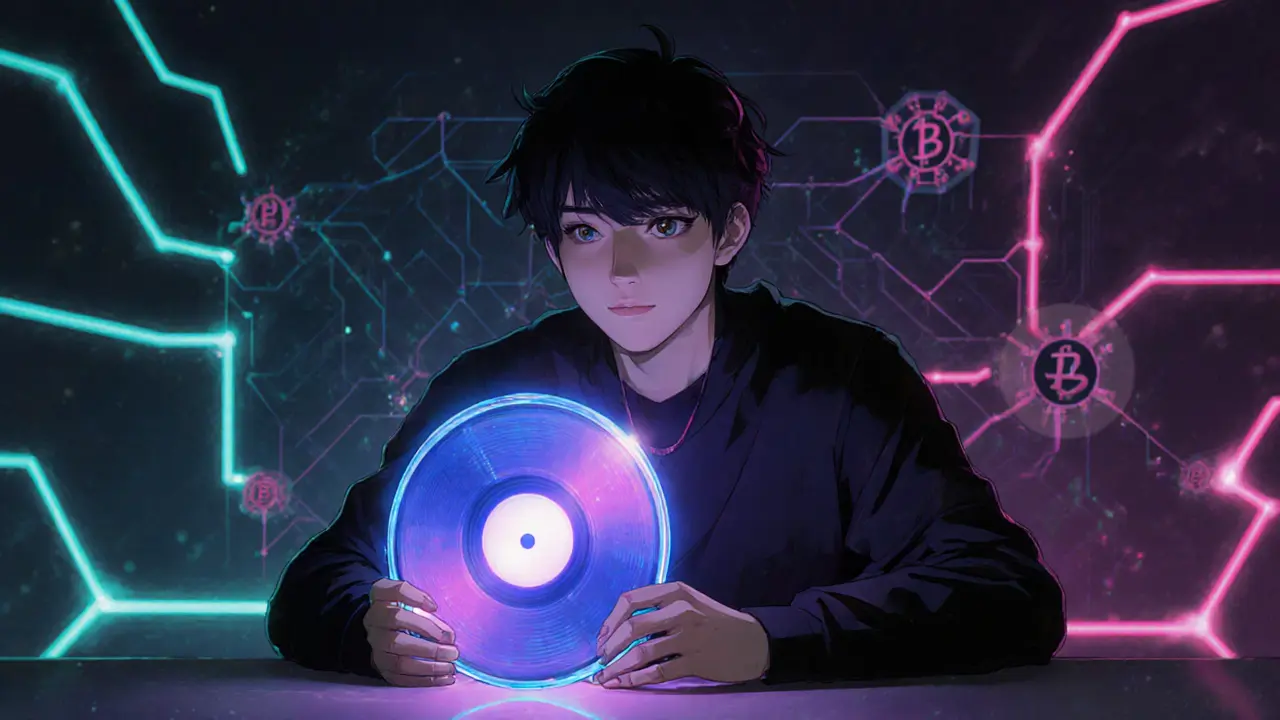Digital Music Ownership: The New Way to Hold Music Rights
When talking about digital music ownership, the use of blockchain to record, trade, and manage rights to songs and recordings. Also known as music NFTs, it gives artists, listeners, and investors a clear, verifiable proof of who owns what.
At its core, music NFTs, unique tokens that represent a specific track, album, or royalty share bridge the gap between creative work and digital scarcity. Music NFTs let a fan buy a token that could grant streaming royalties, backstage passes, or even a piece of the song’s future earnings. This simple model replaces vague contracts with a transparent ledger that anyone can check.
Why Blockchain Is the Engine Behind Ownership
Blockchain, a decentralized ledger that records every transaction in an immutable chain provides the trust layer every music deal needs. Without a central authority, artists can issue tokens directly to fans, and smart contracts automatically split royalties each time the track is played or sold. The result is a system where digital music ownership encompasses music NFTs, and the blockchain enables tokenized music rights.
Smart contracts act like programmable legal clauses. When a listener streams a song, the contract checks the ledger, calculates the share, and sends the payment to the right wallets—all in seconds. This automation reduces paperwork, cuts middle‑man fees, and gives creators a steady, real‑time income stream.
Another key piece is tokenization, the process of converting a physical or digital asset into blockchain‑based tokens. By tokenizing a song, you turn a complex copyright into small, tradable units. Investors can buy a slice of future royalties, while fans get a tangible stake in the music they love. Tokenization also makes it easy to sell or trade rights on secondary markets without renegotiating contracts.
Because the ecosystem runs on open standards, crypto airdrops have become a popular way to introduce new listeners to a project. An airdrop can drop free music tokens to anyone who holds a specific NFT or participates in a community event. This not only rewards early adopters but also spreads awareness of the underlying music catalog.
The posts on this page reflect how the industry is using these tools today. You’ll find guides on how to claim airdrops for music‑related tokens, deep dives into the legal landscape of crypto in different countries, and step‑by‑step tutorials for running your own node to verify music transactions. Whether you’re a creator looking to mint a track, a fan wanting to earn royalties, or an investor scouting the next tokenized hit, the articles below cover the practical steps you need.
In short, digital music ownership is no longer a vague idea—it’s a concrete set of tools that lets anyone participate in the music economy. The next sections give you real‑world examples, from airdrop claim guides to security tips for protecting your music NFTs. Dive in and see how you can start owning, trading, or earning from music today.
- September 6, 2025
- Comments 17
- Cryptocurrency

